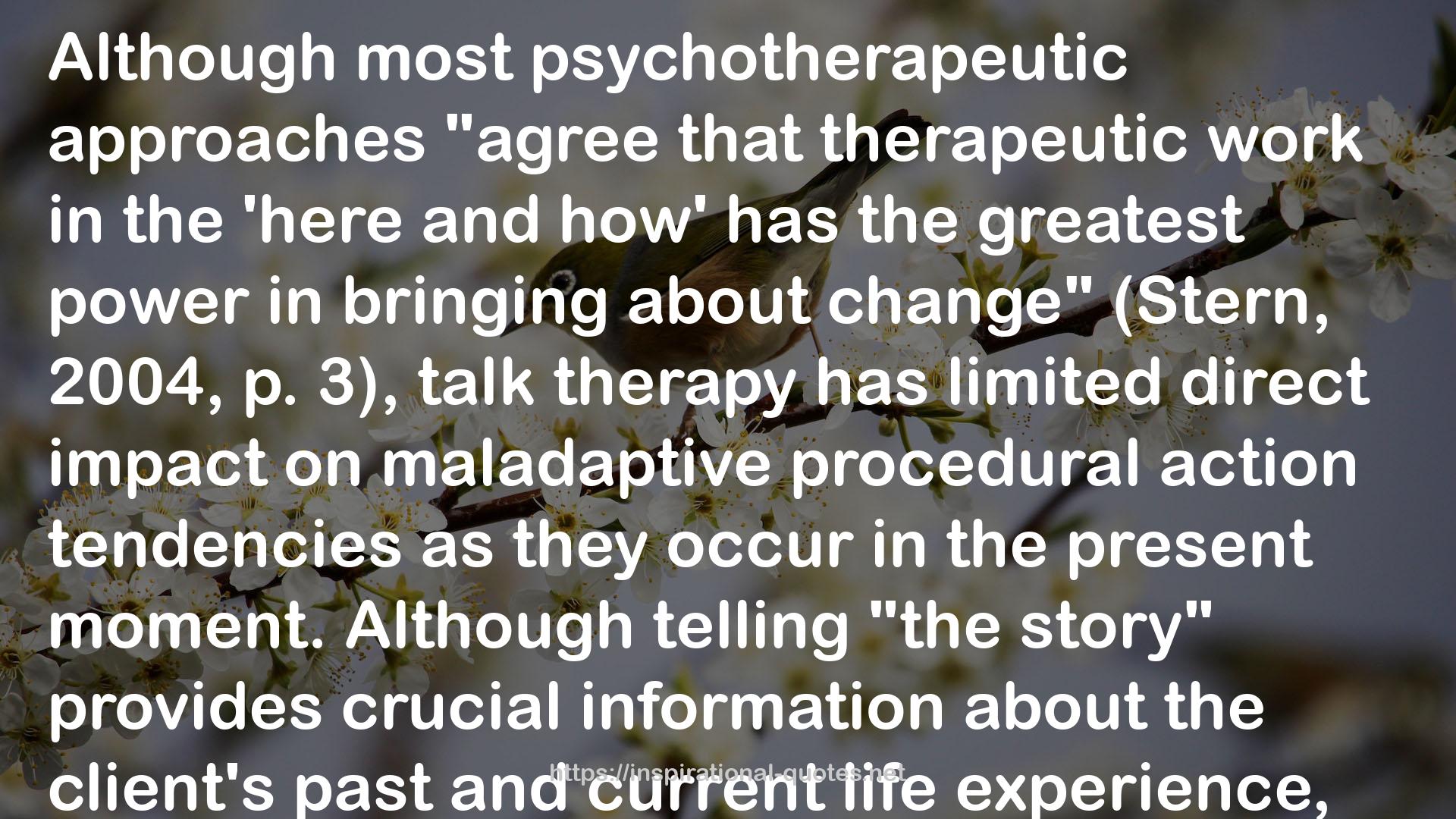" Although most psychotherapeutic approaches "agree that therapeutic work in the 'here and how' has the greatest power in bringing about change" (Stern, 2004, p. 3), talk therapy has limited direct impact on maladaptive procedural action tendencies as they occur in the present moment. Although telling "the story" provides crucial information about the client's past and current life experience, treatment must address the here-and-now experience of the traumatic past, rather than its content or narrative, in order to challenge and transform procedural learning. Because the physical and mental tendencies of procedural learning manifest in present-moment time, in-the-moment trauma-related emotional reactions, thoughts, images, body sensations, and movements that emerge spontaneously in the therapy hour become the focal points of exploration and change. "
― , Trauma and the Body: A Sensorimotor Approach to Psychotherapy
Image for Quotes

here-and-now experience of the traumatic past, rather than its content or narrative, in order to challenge and transform procedural learning. Because the physical and mental tendencies of procedural learning manifest in present-moment time, in-the-moment trauma-related emotional reactions, thoughts, images, body sensations, and movements that emerge spontaneously in the therapy hour become the focal points of exploration and change." style="width:100%;margin:20px 0;"/>
 here-and-now experience of the traumatic past, rather than its content or narrative, in order to challenge and transform procedural learning. Because the physical and mental tendencies of procedural learning manifest in present-moment time, in-the-moment trauma-related emotional reactions, thoughts, images, body sensations, and movements that emerge spontaneously in the therapy hour become the focal points of exploration and change." style="width:100%;margin:20px 0;"/>
here-and-now experience of the traumatic past, rather than its content or narrative, in order to challenge and transform procedural learning. Because the physical and mental tendencies of procedural learning manifest in present-moment time, in-the-moment trauma-related emotional reactions, thoughts, images, body sensations, and movements that emerge spontaneously in the therapy hour become the focal points of exploration and change." style="width:100%;margin:20px 0;"/>